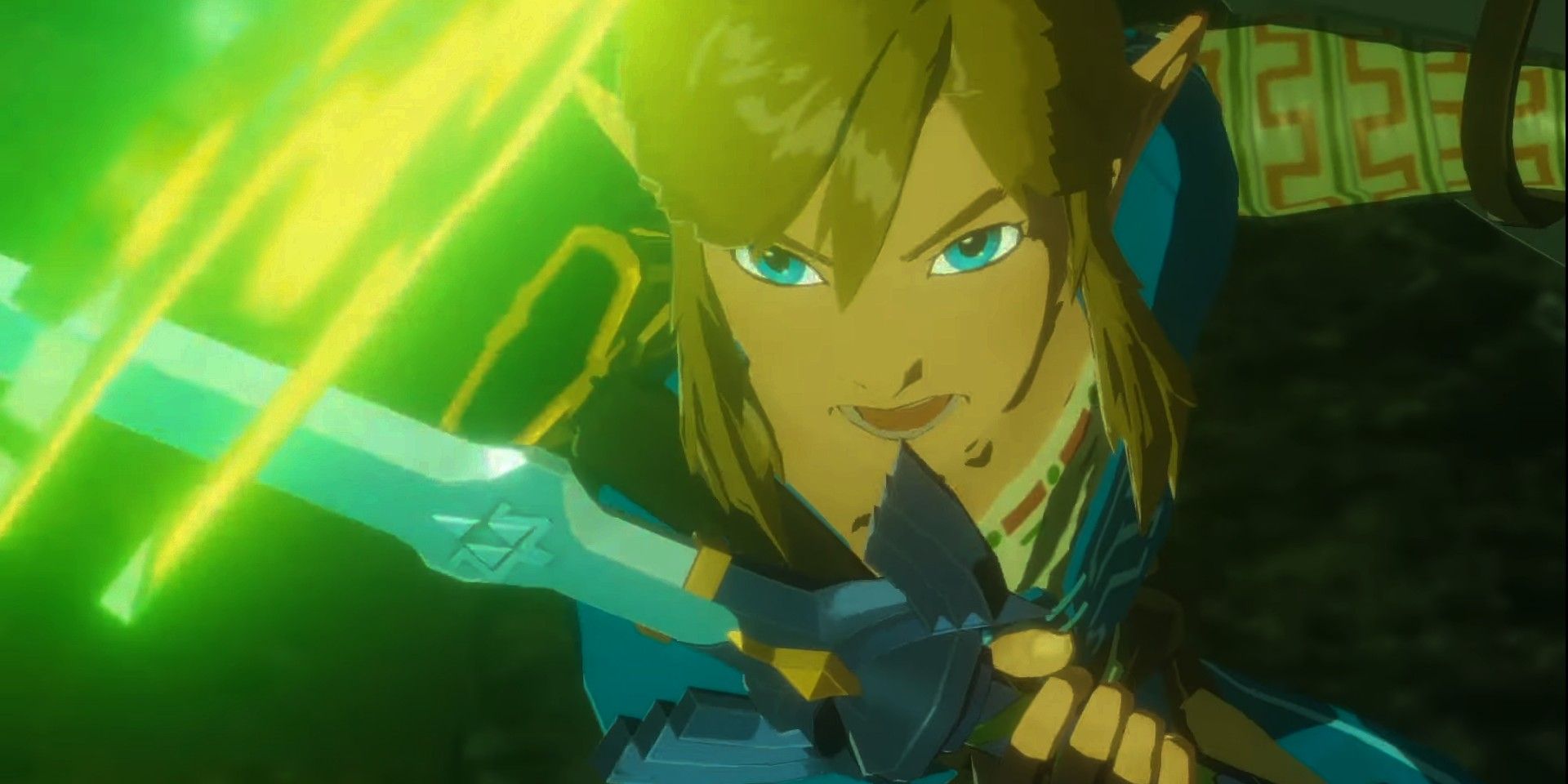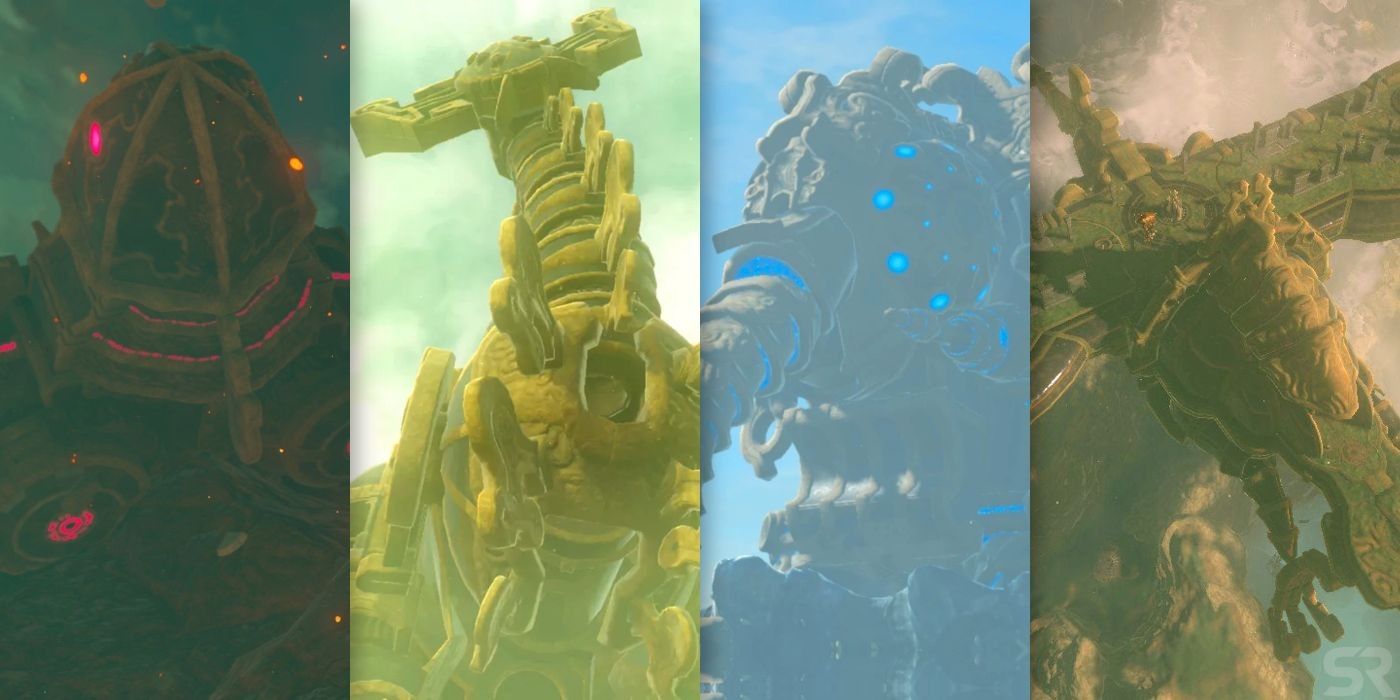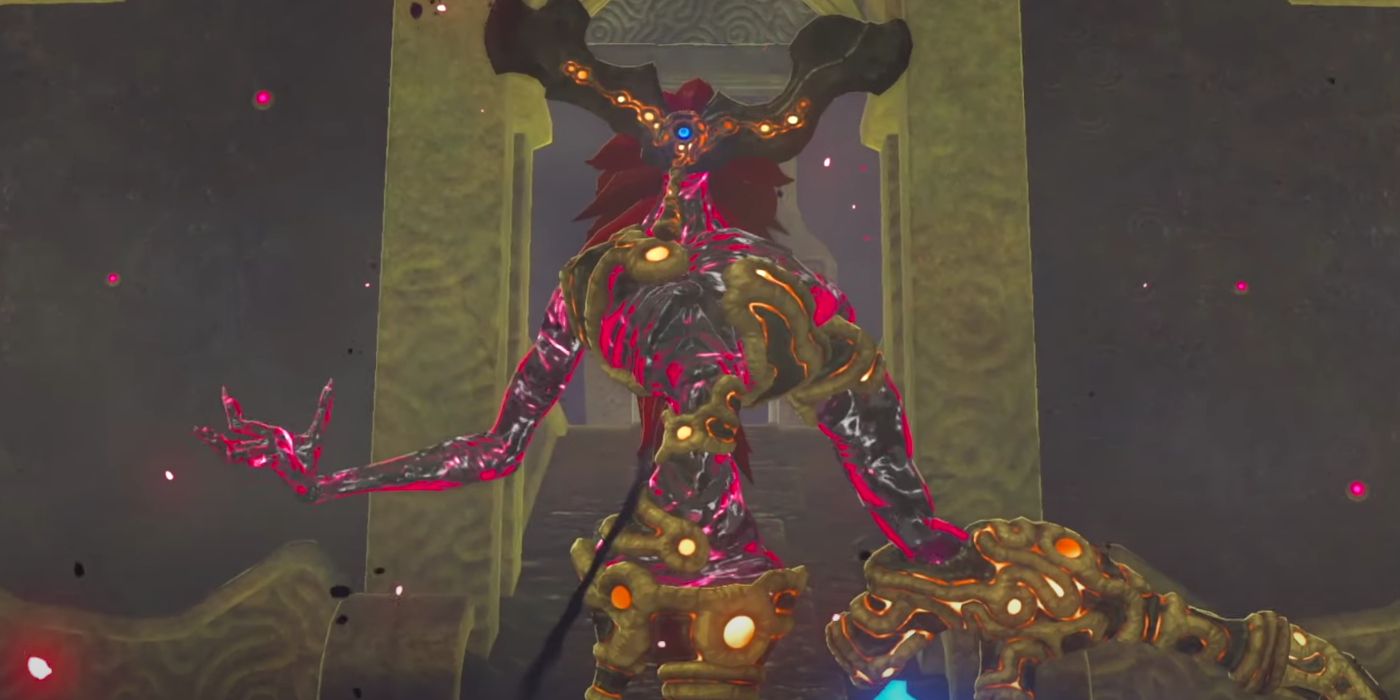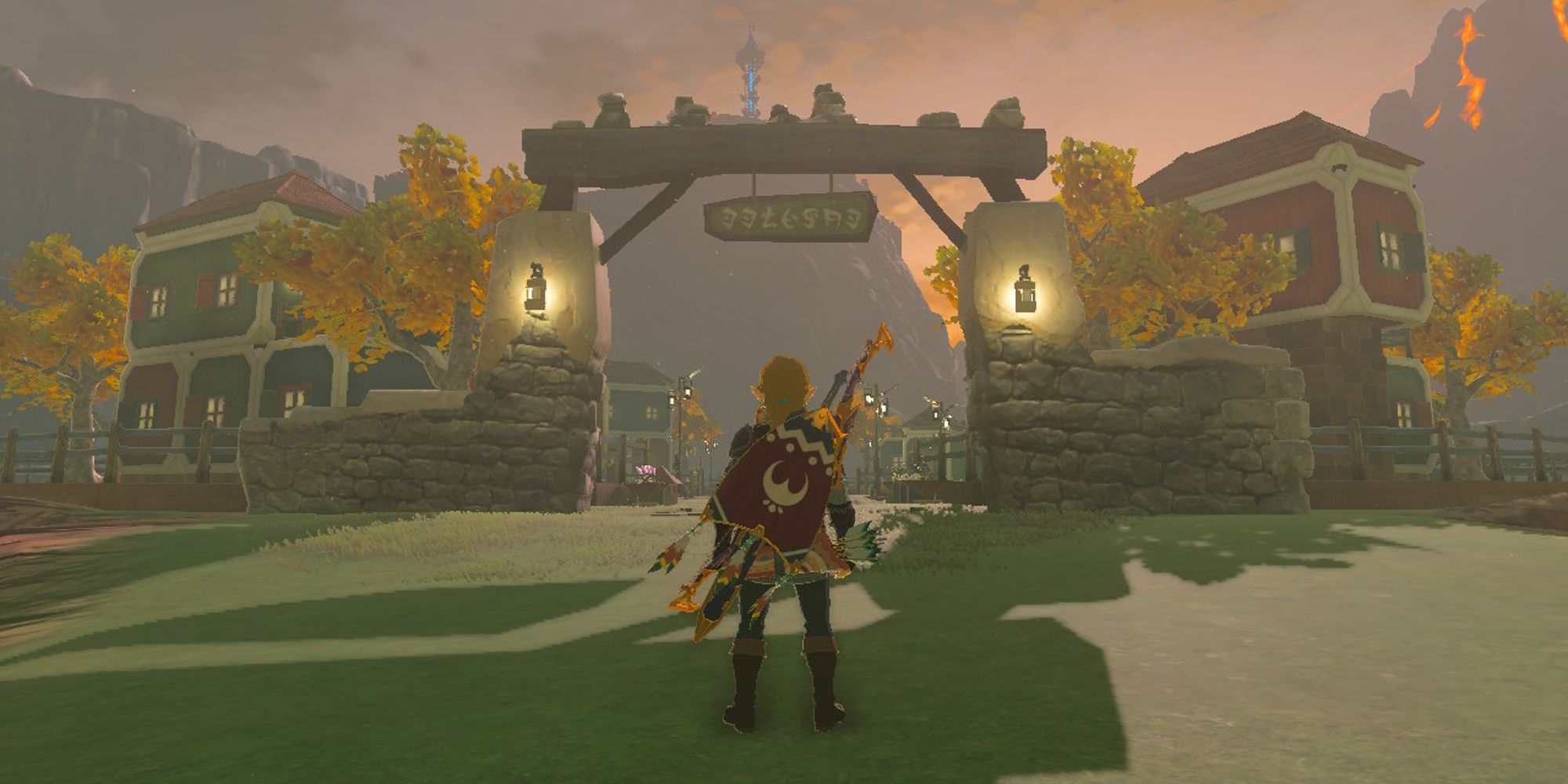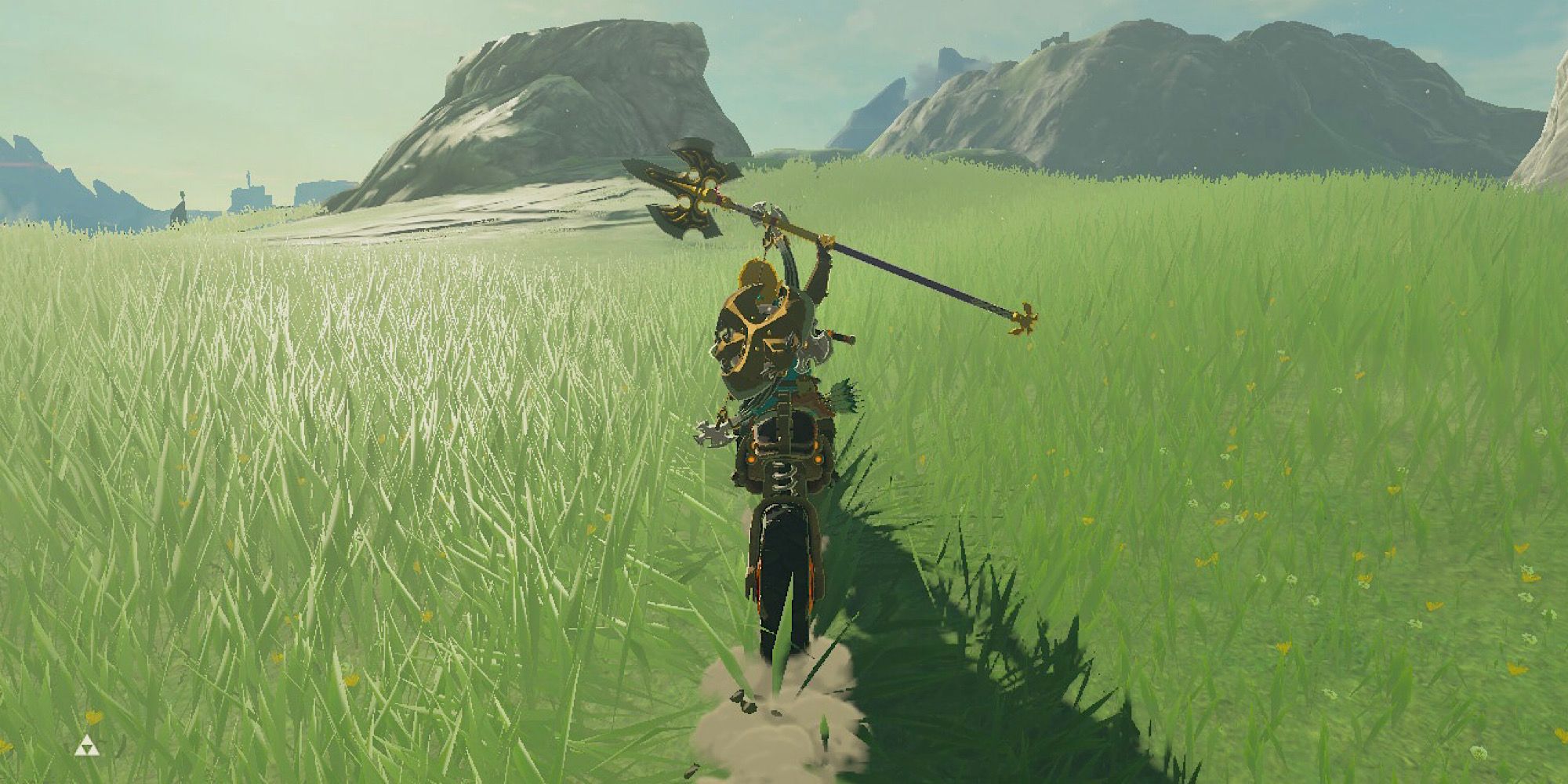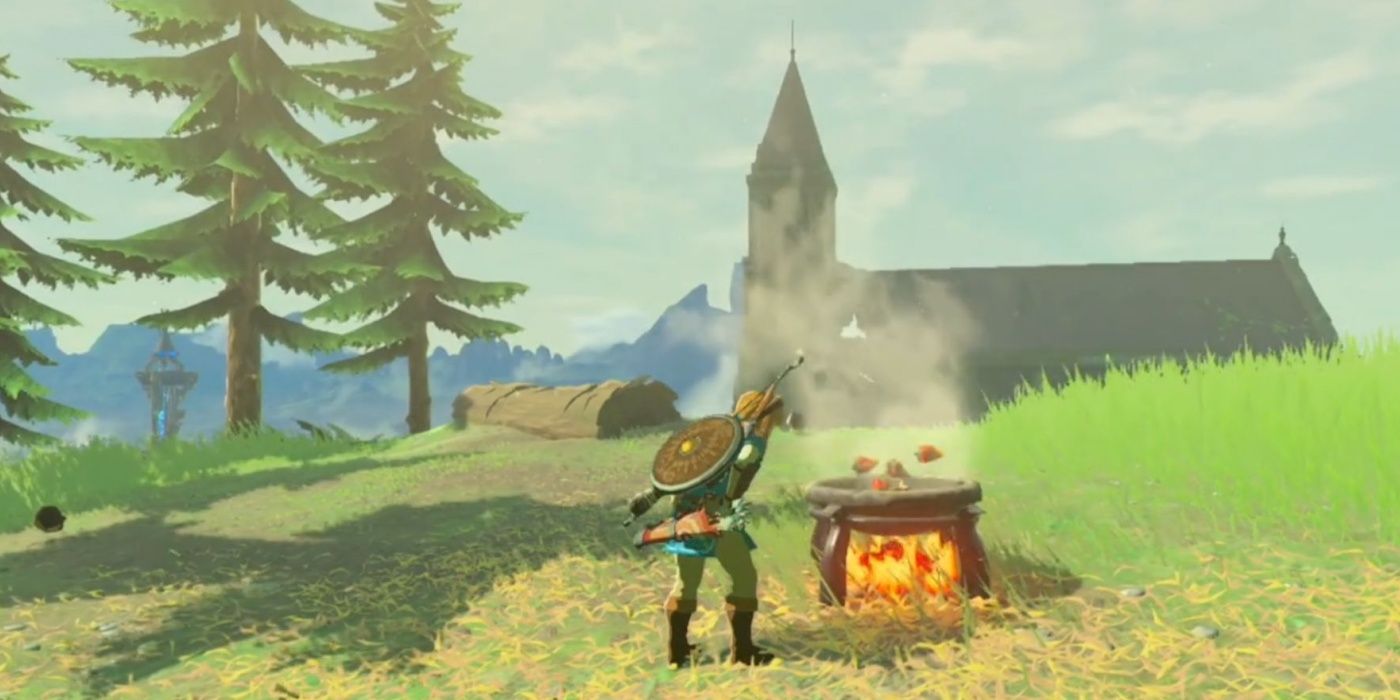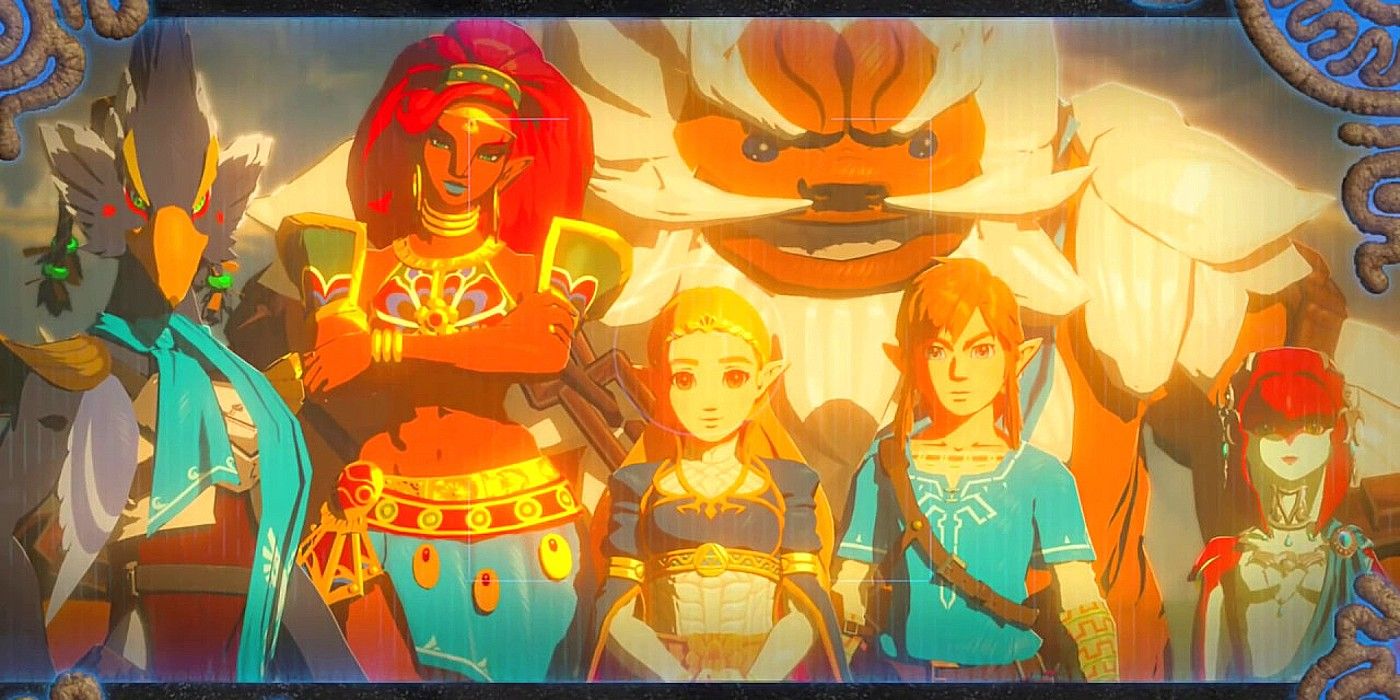The Legend of Zelda: Breath of the Wild is considered by many to be one of the greatest games ever released, but that doesn't mean it's perfect, and it's still got its share of issues that BOTW 2 (or whatever the sequel comes to be called) could fix. None of the flaws found in the original game hamper the experience too significantly, but there's still room for improvement in the next iteration of Link's grand adventure.
The sequel to Breath of the Wild, which is yet to be given an official name, is supposedly still on track to release next year, and for fans of the series, the release can't come soon enough. Outside of the singular trailer shown earlier this year at E3, very little is known of the upcoming game, but that hasn't stopped fans from speculating on Link's next outing. Even the brief trailer teases some exciting new features, such as an increased focus on air traversal, and new iterations of the monsters found in the first game.
But as exciting as these new features are, the thing that will be most beneficial for BOTW 2 will be improving upon the few areas where the first game did fall short. While not every player will find all the game's flaws to be the same (or the same level of severity), there are a few notable standouts that many players - and especially longtime fans of the series - might be able to agree on.
Breath Of The Wild's Lack Of Traditional Dungeons Should Be Fixed For BOTW 2
The lack of traditional Zelda-style dungeons is often the first thing that comes up when players are asked about their BOTW complaints. One of the main appeals of the Zelda series is exploring the dungeons that each game has to offer and becoming enthralled with the unique and imaginative design of almost all of them. Even some of the most criticized dungeons of the series (Ocarina of Time'sWater Temple) still manage to feel distinctly different from the rest of the game and give the player essentially a brand new mini-world to explore.
BOTW completely drops the ball in this regard. For starters, it only has four main dungeons. This isn't inherently a problem on its own, as Majora's Mask also only has four primary dungeons, but the difference is that they're some of the best in the entire series, while all of BOTW's feel exactly the same. Rather than allow the player to explore more traditional dungeons, BOTW sees Link explore the four divine beasts instead. Despite looking different on the exterior, all four beasts feel exactly the same to explore, as they all feature the same futuristic, mechanical aesthetic, and all share the same gimmick of requiring the player to tilt and move the beast to open up new areas.
This is a massive step-down from the creativity of standard Zelda dungeons and looks especially egregious when compared to the recent release of Skyward Sword HD, which despite its flaws, features some of the best dungeons in the Zelda series. BOTW tries to compensate for its uninspiring Divine Beasts with its 120 shrines, which are essentially mini-dungeons scattered across the world, but many of those are equally as bland, and all 120 once again share the exact same aesthetic.
Fortunately, this is a fairly easy fix for the sequel. If BOTW 2 can find a way to incorporate even just a handful of traditional dungeons, it would immediately fix one of the biggest flaws of its predecessor. BOTW 2 could even keep its shrines, as the similarity of all of them would be much more forgivable if supplemented with just four or five traditional dungeons.
BOTW 2 Should Fix Breath Of The Wild's Unimaginative Boss Fights
This is a very similar complaint to the lack of variety found in BOTW's Divine Beasts, but the game's boss fights are an even more egregious example of lack of creativity. The Zelda series is known for its iconic boss fights just as much as its dungeons, and unfortunately, none of BOTW's boss fights stand out in any way whatsoever. Rather than give players the opportunity to face off against unique and memorable creatures such as The Wind Waker's massive armored bug Gohma or Skyward Sword's six-armed automaton Koloktos, BOTW players are instead stuck with essentially four iterations of the same boss in Windblight Ganon, Thunderblight Ganon, Fireblight Ganon, and Waterblight Ganon. The four bosses all have slightly different move-sets and weaknesses, but they all look and behave very similarly. Even the most dedicated BOTW players would probably struggle to tell the four apart.
Fortunately, if BOTW 2 addressees the first game's dungeon problem this is an issue that would probably be naturally fixed as well. Taking the player to more traditional-style areas such as a volcano of some sort or a classic Zelda elemental-themed temple, would naturally open the door to the game creating a boss within the unique aesthetic of said dungeon as well. More variety in the game's bosses would instantly help elevate BOTW 2 up a notch or two.
BOTW's Boring Towns & Settlements Can Be Improved In Breath Of The Wild 2
Another detriment of BOTW is that all of its towns and settlements feel similarly dull and lack the livelihood of many other towns seen in the series. Part of this is due to design, of course, since BOTW takes place in what is essentially a post-apocalyptic world it makes sense that there wouldn't be any bustling cities around, but that doesn't change the fact that those cities are still missed. Series staples like The Wind Waker's Windfall Island or Majora's Mask's Clock Town feel bustling and alive, full of citizens going about their daily lives, as well as plenty of activities to partake in. The towns in BOTW still feel authentic, but they also feel somewhat empty compared to other settlements in the series. Even if BOTW wanted to avoid bustling settlements to stay in line with the desolate tone of the game, it still would be nice to have a few more mini-games and activities to participate in in the world's cities.
Luckily, BOTW 2 can fix this problem while still staying in line with the game's story. Since BOTW 2 takes place after Link has defeated Calamity Ganon, maybe a key part of the game is rebuilding Castle Town. This could work similarly to how the player was able to build Tarrey Town in the first game, only this time Castle Town has the potential to become a full-on bustling city, rather than what was essentially a glorified cul-de-sac in Tarrey Town. One massive city in Castle Town and the same amount of smaller settlements scattered across Hyrule would probably be enough to rectify this issue, and would give the player a satisfying hub to return to over the course of their adventure.
Breath Of The Wild's Sequel Should Skip Weapon Durability
The handling of weapon durability in BOTW is one of the game's most divisive topics. Many fans support the mechanic, praising the way that the game's constantly breaking weapons force the player to mix up their playstyle and be creative, while other fans bemoan the lack of permanent weapons and items, claiming that it ruins the overall sense of progression of the adventure. Fortunately, there's a way to strike a good balance and make both camps happy. BOTW 2 could continue to implement a weapon durability system but could give players a way to fortify certain weapons so they don't break. Perhaps after renovating Castle Town to a certain level, a blacksmith could set up shop who could be paid in Rupees to fortify weapons so the player can have them forever.
Now, of course, some people might say a system like this trivializes the durability system as a whole since players could just fortify their favorite weapons and never use anything else, but there's a way around this too. Perhaps the blacksmith doesn't become available until later in BOTW 2, and even then his prices to fortify weapons are extremely expensive, especially for the rarer drops. This could force players to still change up their weapons throughout the main adventure, and could also give them something to grind toward in the post-game when Rupees are more plentiful in Zelda games. A system like this could likely appease both groups of fans, and help fix one of the most divisive issues in the first game.
Breath Of The Wild 2 Could Balance BOTW's Difficulty More Easily
When the player first steps into the world of BOTW, it's actually fairly difficult. Link only has 3 hearts at the beginning of his adventure, and the game's open-ended nature makes it very easy to wander into an area with much tougher enemies that can wipe Link out instantly. However, once the player gathers their bearings and makes some progress in their adventure the game becomes almost laughably easy. The main reason for this is BOTW's cooking system.
Link can make a variety of different dishes throughout his adventure, all of which offer different effects ranging from health or stamina replenishment to attack or defense or speed boosts. At face value this is a pretty cool system that incentivizes the player to fully explore the world and gather all sorts of materials. However, it's also incredibly easy to take advantage of, which essentially kills the difficulty curve of the game. Once the player learns some better recipes, it's easy to stuff Link's pockets with all sorts of different dishes that not only completely refill his HP, but also give him an advantage against any foe he might come across. The most broken part of the system, though, is that the player can open the inventory at any given moment, and stuff Link's face with as many dishes as they want, thus being able to replenish his entire HP or stamina bar at any given moment. This effectively kills any challenge in the game, since as long as Link has his pockets full of food even Hyrule's toughest Lynels are no longer all that intimidating.
BOTW 2 could easily fix this problem with just one or two tweaks. For one, the game could make it so Link is only able to eat outside of combat. This might make the game too challenging though, so that might be better reserved for a Hard mode. A better solution would be giving Link some sort of hunger gauge, where he is only able to eat a certain amount of food at any given interval. This would keep the cooking system from the first game intact, while also allowing the sequel to have a proper difficulty curve.
BOTW 2 Could Make Breath Of The Wild's Story Even Better
Breath of the Wild tried to put an emphasis on story (it was even the first Zelda game to have voice acting) but it just didn't quite stick the landing on it. While many of its cutscenes are well done and its voice acting solid for the most part, many of the scenes lacked any emotional punch because of the nature of the story. In BOTW the player first takes control of Link after he wakes up from a 100-year slumber and then the bulk of the story is told through flashbacks as Link regains his memories over the course of the adventure. The problem with this is no matter how emotional some of those cutscenes are the emotion is still diluted by the fact the player is watching events that already happened 100 years in the past. It's much harder to get emotionally invested in a story when the player already knows how the events portrayed in those cutscenes are going to ultimately end.
This is another problem that should be easily remedied in the sequel. Assuming Link isn't put to sleep again, and there isn't another 100-year time jump, most of BOTW 2's story and cutscenes should play out in the present rather than the past. This change on its own should make it easier for the player to get emotionally invested in the story, and as long as it retains the quality and presentation of the first game's cutscenes, should create a much more emotional and compelling experience for the player.
The Legend of Zelda: Breath of the Wild is a fantastic game, but there's still room for the sequel to be even better. If the upcoming game can address any of the flaws of the first title, then BOTW 2 has the potential to be even more special than its predecessor.

